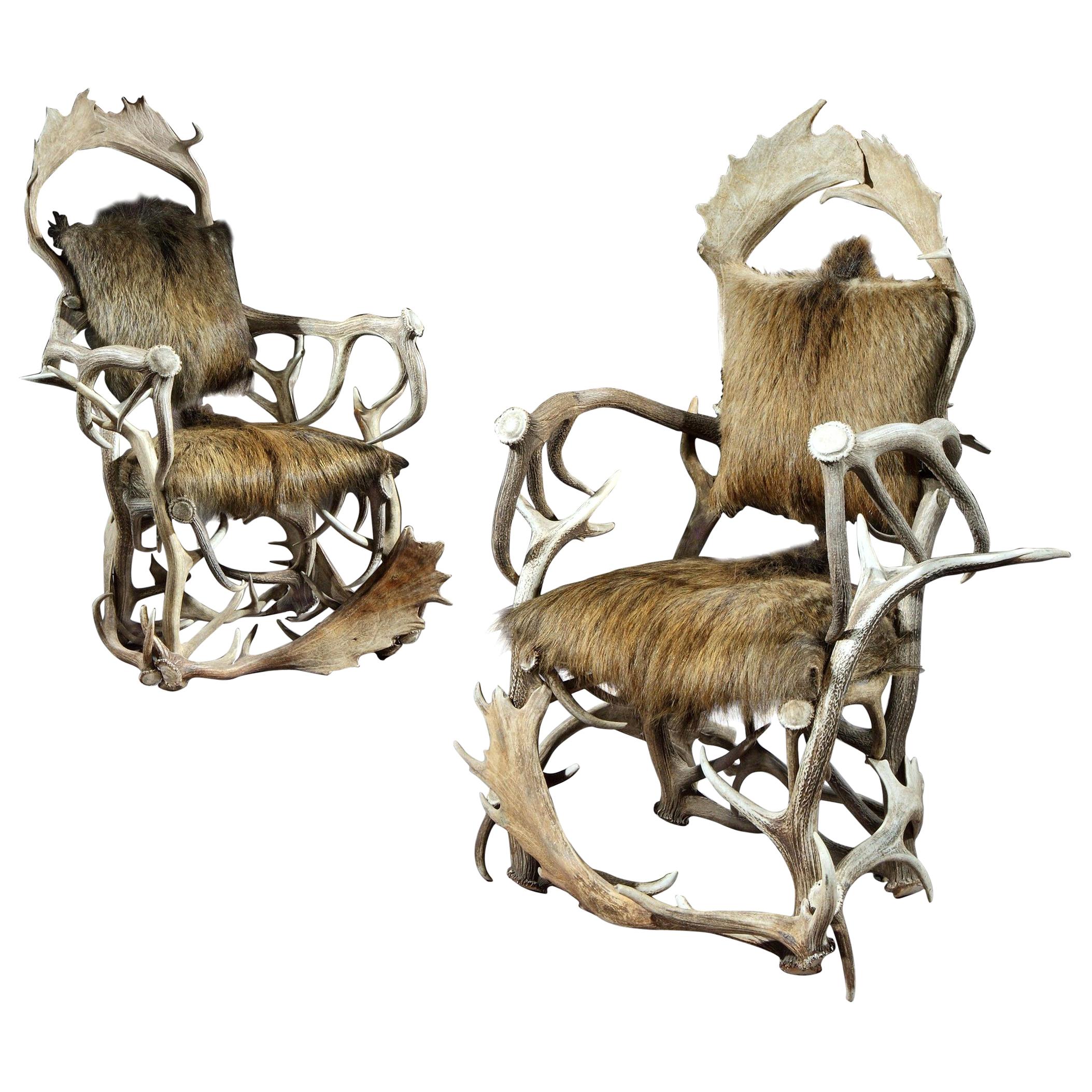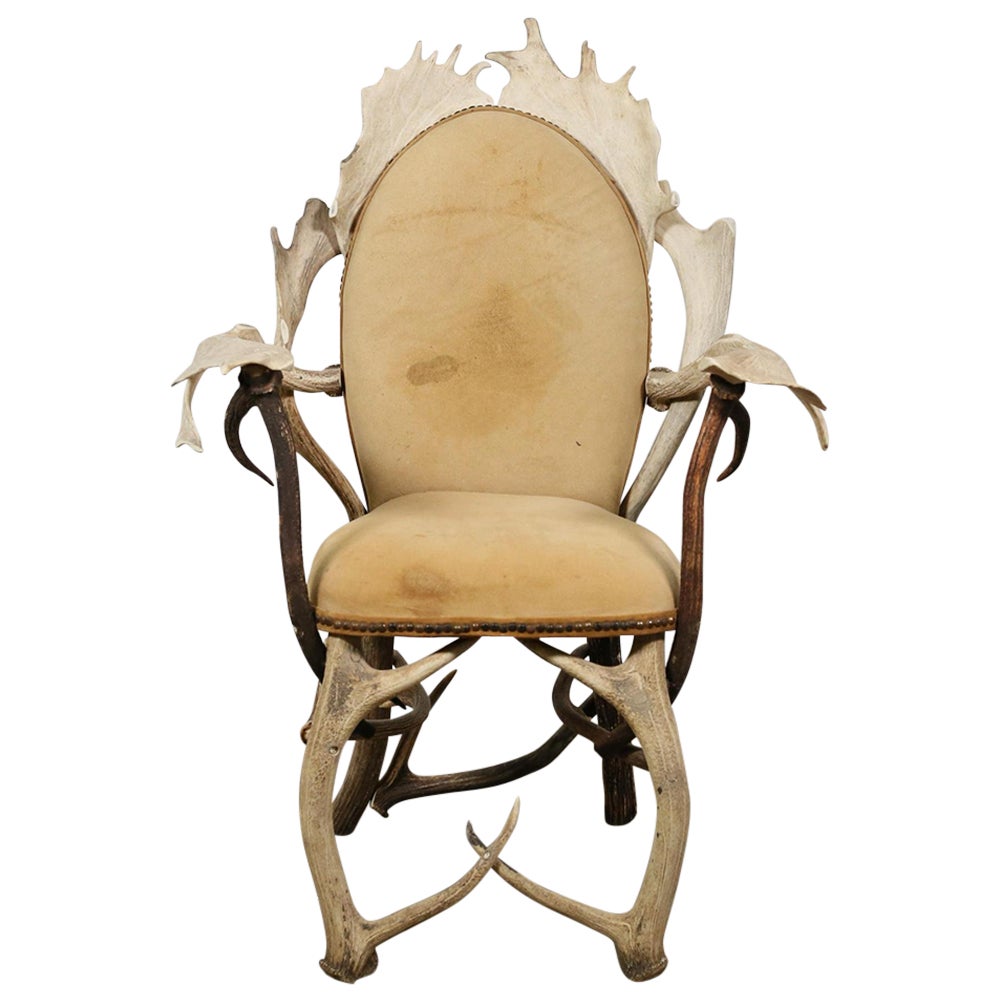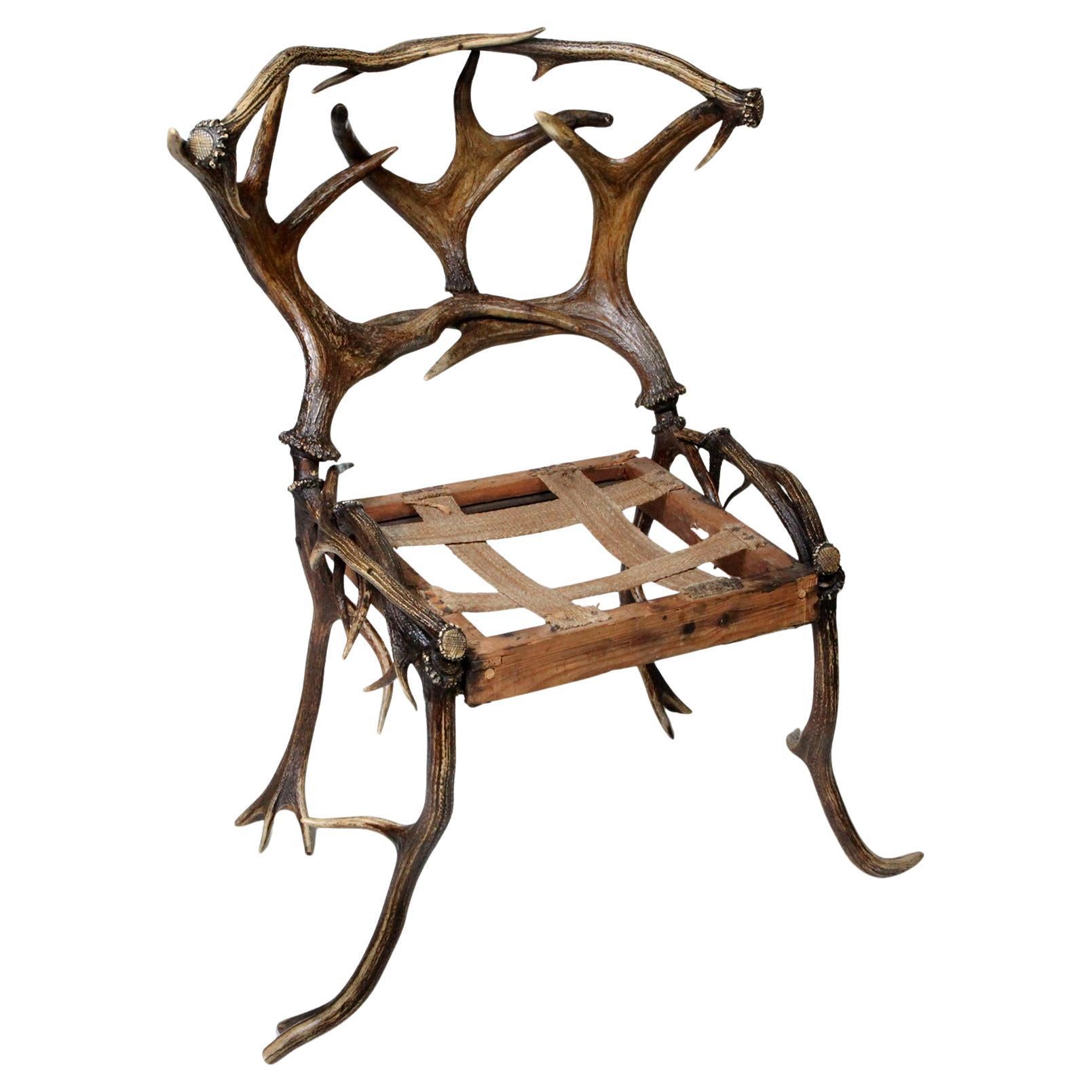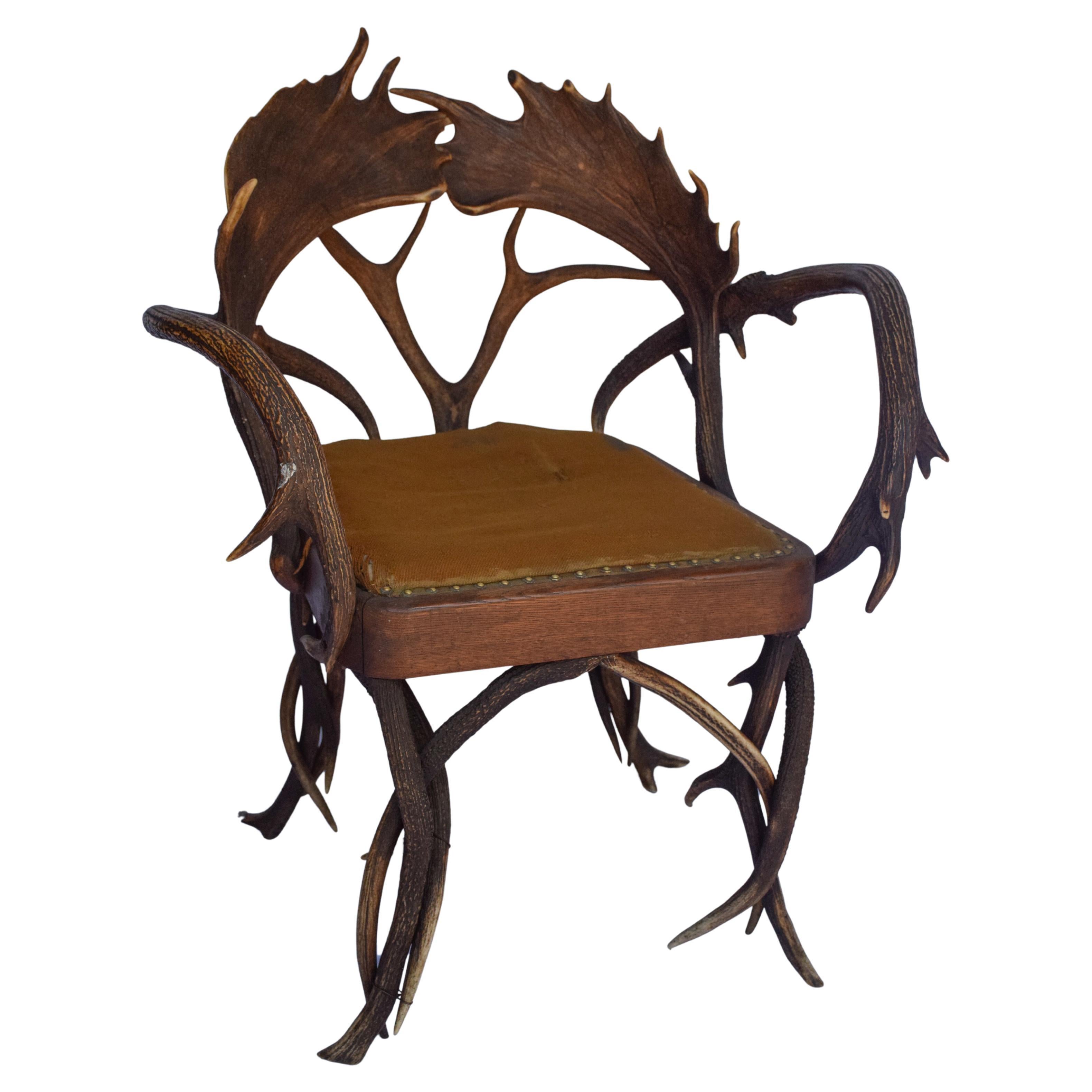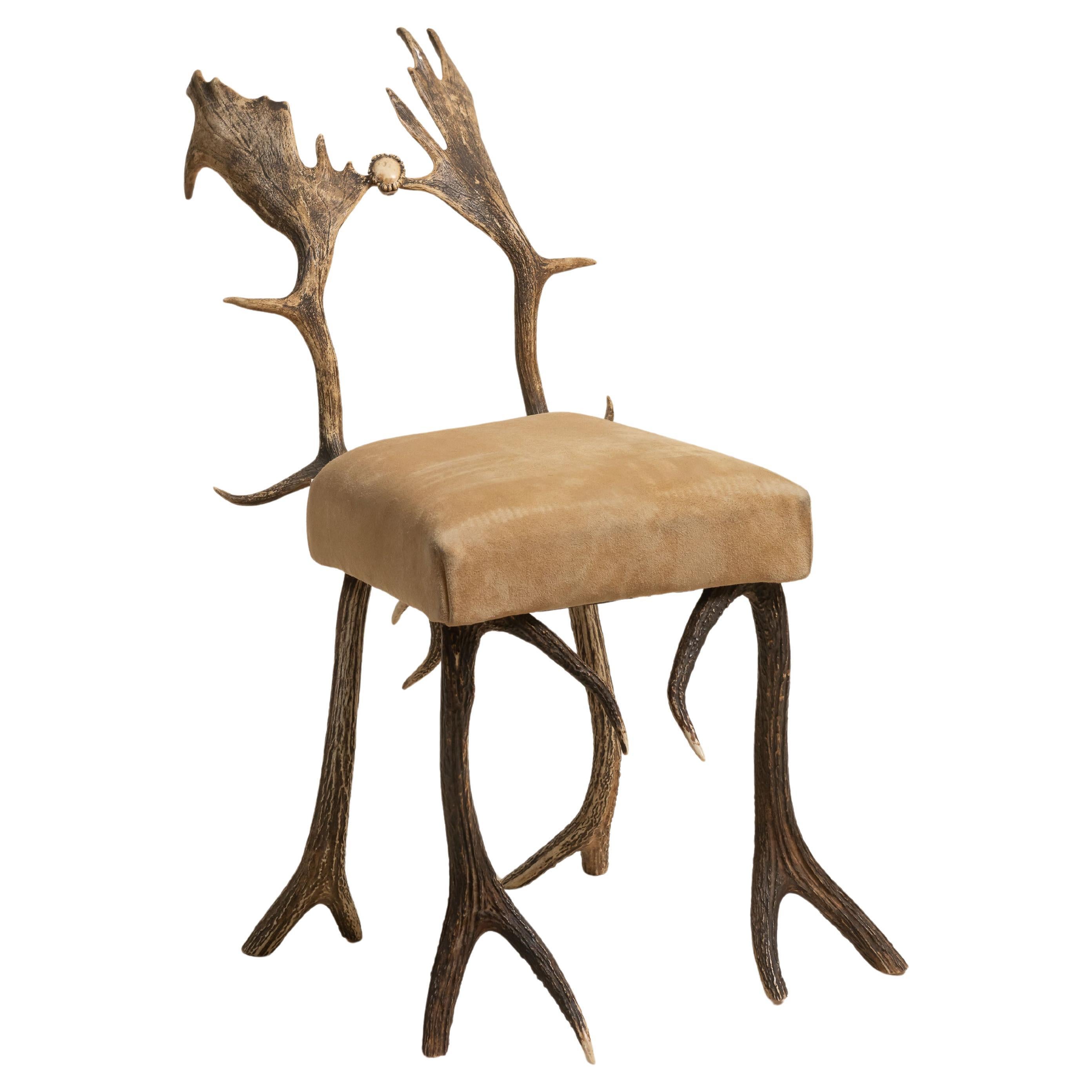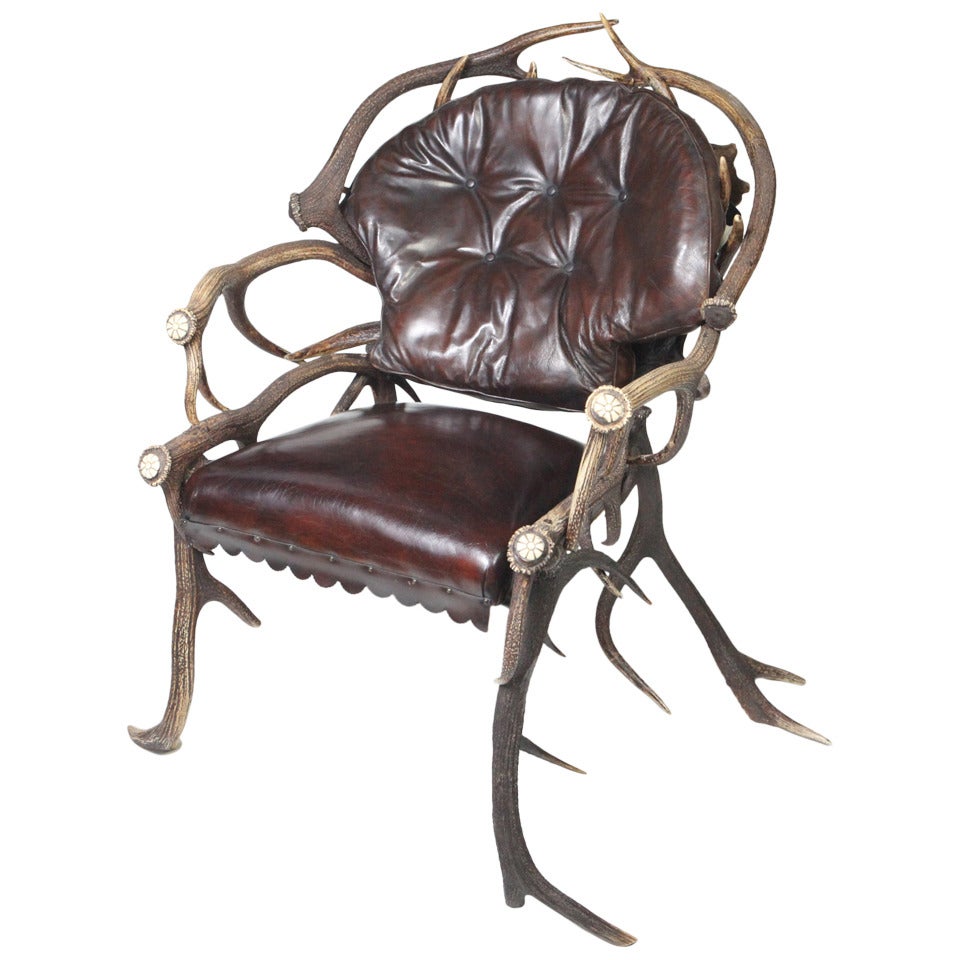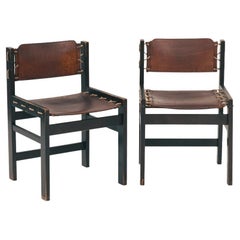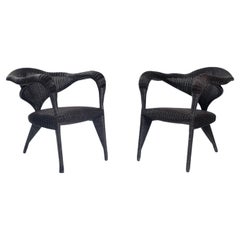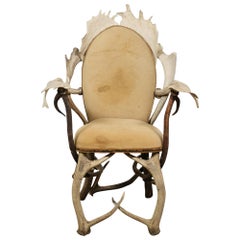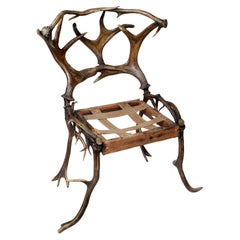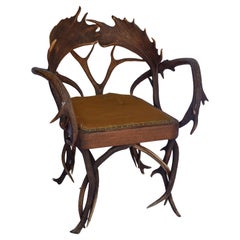Items Similar to Wildboar chair, Armchair Hunting Trophy, Antler, Red Deer, Fallow, Hide
Want more images or videos?
Request additional images or videos from the seller
1 of 21
Wildboar chair, Armchair Hunting Trophy, Antler, Red Deer, Fallow, Hide
$5,713.69
$10,388.5344% Off
£4,208.12
£7,651.1344% Off
€4,757.50
€8,65044% Off
CA$7,773.03
CA$14,132.7944% Off
A$8,637.55
A$15,704.6444% Off
CHF 4,526.17
CHF 8,229.4044% Off
MX$105,924.20
MX$192,589.4544% Off
NOK 57,728.66
NOK 104,961.2044% Off
SEK 54,309
SEK 98,743.6444% Off
DKK 36,218.12
DKK 65,851.1244% Off
Shipping
Retrieving quote...The 1stDibs Promise:
Authenticity Guarantee,
Money-Back Guarantee,
24-Hour Cancellation
About the Item
Hunting trophy armchair of antlers, wild boar and red deer. Very expressive and impressive looking throne
The fluid form of the antlers creates a sculptural, organic aesthetic.
Next to that this chair is usable and comfortable. It has taken great skill to make these chairs, selecting massive antlers to create exquisite form and stability within a minimalistic, sculptural aesthetic.
The impressive crestings, sides and front stretchers on each armchair are made from five magnificent fallow deer antlers. The arms and supports on each chair are made from massive red deer antlers. The antlers are arranged creatively to create both, a stable structure and sculptural form. The seats are upholstered in wild boar hide.
Measurements: h 146, d 95, w 135 cm
Seating height 47 cm
Museums With Collections of Antler Furniture:
• Victoria & Albert Museum, London
• Museum casle trautenfels, Trautenfels – Austria
• Museum of natural history, Venice
• Palace Museum, Beijing
“There is grace and movement in the antler itself. They’re one of the most beautiful forms in nature…” Gail Flynn
Hunting trophies have been used as source material for clothes hooks, storage racks and lamps since the 15th century. Mounting antlers and stuffed heads on walls provided impressive, decorative displays for hunting trophies. A hunting lodge replete with antlers and stuffed animals was most likely where ideas for antler furnishings emerged.
At the beginning of the 19th century antler furniture was made exclusively for the European nobility to decorate palaces, castles and country seats. The furniture was either made completely from stag antler, or it was decorated with antler pieces from the stag, deer, fallow deer and others, or veneered with sliced antler pieces to create a hunting design.
The first recorded antler furniture dates from 1825, made for a hunting castle of Count William of Nassau near Wiesbaden, Germany. Other famous collections of historical antler furniture are the hunting room in the country estate of the brandhof of Archduke Johann of Austria or the antler collection of Count Arco in his palace in Munich, Germany. There are hundreds of drawings of creative antler decorations by the Austrian furniture maker Joseph Danhauser (1780-1829).
In 1851, chairs, chests of drawers and a sofa made of horns were exhibited at the Great Exhibition Of The Industries Of All Nations in London which were considered one of the great novelties of this iconic exhibition. This created a new lifestyle trend and fashion driven by the ambitious European middle-class and antler furniture disseminated into bourgeoisie households. One of the first designers is the German ivory carver and furniture maker H. F. C. Rampendahl who gained enthusiastic successes on several world exhibitions with his antler furniture. An antler bureau, a horn seating group or individual chairs, decorated gun cabinets, H.F.C. Rampendahl created a whole new design world for fashioning rooms. This prompted other designers in Germany Austria and USA to make antler furniture H.F.C. Rampendahl, Hamburg, P. Keutner, Regensburg, Vitus Madel & Son, Ichenhausen, Kurt Schicker, Regensburg, Heinrich Keitel, Vienna, Rudolf Brix, Vienna, Friedrich Wenzel, San Antonio. These are some of the most important manufacturers of antler furniture and their range covered the whole market of furniture as well as smaller pieces. Their catalogues feature antler furnishings (Geweihmöbel) like antler gun racks, antler chandeliers, antler-frames, antler chairs, lusterweibchen, antler cabinets as well as small decorative items like desk sets, humidors, wardrobes, cutlery, etc..
The last decade has seen a revival in the popularity of antler furniture. Its iconic, natural organic style creates a striking focal point in modern households as well as eye-catchers for hunting lodges and chalets in mountain areas. The flowing sculptural form of antlers retain the grace, agility and presence of the animals that they came from.
Provenance: Private Collection
Literature: • Georg Olms: August Stukenbrok Illustrierter Hauptkatalog. Olmspresse, Hildesheim 1972
• Sabine Spindler: Geweihmöbel 1825-1925. Klaus Spindler, München 2006
• Bruce M. Newman: Fantasy Furniture. Rizzoli, New York 1989
• Christopher Payne: 19th CENTURY EUROPEAN FURNITURE Antique Collectors´ Club, England 1981
• Rainer Haaff: Prachtvolle Stilmöbel Kunst-Verlag-Haaff 2012
• Richard St.John, Longhorn Artist: Wenzel, Friedrich (Wichita State University Office of Research and Sponsored Programs, 1982).
- Dimensions:Height: 57.49 in (146 cm)Width: 53.15 in (135 cm)Depth: 37.41 in (95 cm)Seat Height: 18.51 in (47 cm)
- Style:Black Forest (In the Style Of)
- Materials and Techniques:
- Place of Origin:
- Period:
- Date of Manufacture:Unknown
- Condition:Wear consistent with age and use.
- Seller Location:Zevenaar, NL
- Reference Number:1stDibs: LU9519239637922
About the Seller
5.0
Gold Seller
Premium sellers maintaining a 4.3+ rating and 24-hour response times
1stDibs seller since 2023
20 sales on 1stDibs
Typical response time: <1 hour
- ShippingRetrieving quote...Shipping from: Zevenaar, Netherlands
- Return Policy
Authenticity Guarantee
In the unlikely event there’s an issue with an item’s authenticity, contact us within 1 year for a full refund. DetailsMoney-Back Guarantee
If your item is not as described, is damaged in transit, or does not arrive, contact us within 7 days for a full refund. Details24-Hour Cancellation
You have a 24-hour grace period in which to reconsider your purchase, with no questions asked.Vetted Professional Sellers
Our world-class sellers must adhere to strict standards for service and quality, maintaining the integrity of our listings.Price-Match Guarantee
If you find that a seller listed the same item for a lower price elsewhere, we’ll match it.Trusted Global Delivery
Our best-in-class carrier network provides specialized shipping options worldwide, including custom delivery.More From This Seller
View AllMedieval walnut sculptural arm chair with floral carvings, 17th century
Located in Zevenaar, NL
This unique late medieval chair dates from the Romanesque period and was made in England.
The chair is made of walnut wood, in which beautiful floral patterns are carved.
It looks l...
Category
Antique 17th Century British Medieval Side Chairs
Materials
Walnut
$10,780 Sale Price
20% Off
Free Shipping
Art Deco Amsterdam School armchair in oak with straw seat, The netherlands, 1930
Located in Zevenaar, NL
Oak armchair in Amsterdam school style, with straw seat, 1930
In good condition.
measurements: height 110cm x wide 54cm x depth 47cmseating height: 45cm
Category
Vintage 1930s Dutch Art Deco Side Chairs
Materials
Straw, Oak
Vintage Brutalist Hide Leather and Wood with Rope Dining Chairs, Set of 2
Located in Zevenaar, NL
Beautiful and very rare set of 2 hideleather brutalist chairs from The Netherlands. Fully functional, all cleaned, waxed and leather nourished. On 2 of the chairs, the leather is tor...
Category
Vintage 1960s Dutch Brutalist Dining Room Chairs
Materials
Leather, Rope, Pine
$1,172 Sale Price / set
20% Off
Scultural organic tripod rattan armchair, 2, 1980s
Located in Zevenaar, NL
Sculptural set of 2 tripod rattan chairs.
They remind you of Boris Sipek, the Dutch Tchech designer, but I do not think they are.
Well made and also comfortable, because the seat is ...
Category
Vintage 1980s Dutch Post-Modern Side Chairs
Materials
Rattan
Egon Eiermann SE119 architect chair, Germany, 1961
By Wilde + Spieth, Egon Eiermann
Located in Zevenaar, NL
This SE 119 chair, designed in 1958 by the architect & designer Egon Eiermann for Wilde + Spieth in Germany.
It was designed for the New Kaiser Wilhelm Gedachtniskirche, a building ...
Category
Vintage 1960s German Dining Room Chairs
Materials
Leather, Beech
$595 Sale Price
20% Off
Chiavari Italian Gio Ponti style ebonised straw highback chair, 1950s
Located in Zevenaar, NL
Italian ebonised straw webbing highback side chair in manner of Chiavari, 1950s
Clearly in the manner of Chiavari, Gio Ponti
Slightly higher seatpost the regular (47 cm) it is perfe...
Category
Vintage 1950s Italian Mid-Century Modern Side Chairs
Materials
Straw, Wood
You May Also Like
Armchair, Pair, Hunting Trophy, Antler, Red Deer, Fallow, Wild Boar, Hide
Located in BUNGAY, SUFFOLK
Pairs of hunting trophy armchairs are exceptionally rare. This pair are also unusual because they are made from a few large antlers giving them a minimalist quality. The fluid form of the antlers creates a sculptural, organic aesthetic. They are also usable and very comfortable. It has taken great skill to make these chairs, selecting massive antlers to create exquisite form and stability within a minimalistic, sculptural aesthetic. They are dramatic and unusual injecting a naturalistic and organic gravitas to any interior which reflects the grace, agility and presence of the kings of forest that they came from.
The impressive crestings, sides and front stretchers on each armchair are made from five magnificent fallow deer antlers. The arms and supports on each chair are made from eight massive red deer antlers. The antlers are arranged creatively to create both, a stable structure and sculptural form. The seats are upholstered in wild boar hide.
Dimensions: Width 91cm., 35.83in., Height 132cm., 51.97in., Depth 96cm., 37.80in.
Museums With Collections Of Antler Furniture
• Victoria & Albert Museum, London
• Museum casle trautenfels, Trautenfels – Austria
• Museum of natural history, Venice
• Palace Museum, Beijing
“There is grace and movement in the antler itself. They’re one of the most beautiful forms in nature…” Gail Flynn
Hunting trophies have been used as source material for clothes hooks, storage racks and lamps since the 15th century. Mounting antlers and stuffed heads on walls provided impressive, decorative displays for hunting trophies. A hunting lodge replete with antlers and stuffed animals was most likely where ideas for antler furnishings emerged.
At the beginning of the 19th century antler furniture was made exclusively for the European nobility to decorate palaces, castles and country seats. The furniture was either made completely from stag antler, or it was decorated with antler pieces from the stag, deer, fallow deer and others, or veneered with sliced antler pieces to create a hunting design.
The first recorded antler furniture dates from 1825, made for a hunting castle of Count William of Nassau near Wiesbaden, Germany. Other famous collections of historical antler furniture are the hunting room in the country estate of the brandhof of Archduke Johann of Austria or the antler collection of Count Arco in his palace in Munich, Germany. There are hundreds of drawings of creative antler decorations by the Austrian furniture maker Joseph Danhauser (1780-1829).
In 1851, chairs, chests of drawers and a sofa made of horns were exhibited at the Great Exhibition Of The Industries Of All Nations in London which were considered one of the great novelties of this iconic exhibition. This created a new lifestyle trend and fashion driven by the ambitious European middle-class and antler furniture disseminated into bourgeoisie households. One of the first designers is the German ivory carver and furniture maker H. F. C. Rampendahl who gained enthusiastic successes on several world exhibitions with his antler furniture. An antler bureau, a horn seating group or individual chairs, decorated gun cabinets, H.F.C. Rampendahl created a whole new design world for fashioning rooms. This prompted other designers in Germany Austria and USA to make antler furniture H.F.C. Rampendahl, Hamburg, P. Keutner, Regensburg, Vitus Madel & Son, Ichenhausen, Kurt Schicker, Regensburg, Heinrich Keitel, Vienna, Rudolf Brix...
Category
Antique Late 19th Century European Victorian Armchairs
Materials
Antler, Hide
Deer, Elk & Moose Antler Throne Chair in the Style of Arthur Court
Located in Chicago, IL
Authentic antler chair. The same form as the cast and patinated enamel aluminum antler chair by Arthur Court. The last three photos are of an Arthur Court Aluminum Antler chair that ...
Category
Vintage 1960s American Adirondack Lounge Chairs
Materials
Brass
$4,600 Sale Price
20% Off
Austrian Antler Chair
Located in New York, NY
Rare antique Austrian antler chair. Designed with unique fallow deer antler forming the supporting back of the chair. The naturalistic looking side supports are artistically constr...
Category
Antique 19th Century Austrian Chairs
Materials
Antler
$10,600
Black Forest Antler Chair
Located in Houston, TX
An antler armchair crafted from fallow deer antlers, showcasing the rustic charm and craftsmanship of 20th-century design. Reflecting the tradition of using natural elements in furni...
Category
Early 20th Century German Black Forest Armchairs
Materials
Antler, Wool, Wood
Antler and Suede Chair, 20th Century
Located in San Francisco, CA
Side Chair made of Antlers and Fallow Antlers, upholstered in a rich tan suede. Great addition to any room as art, especially, in a wonderful cabin or chic study.
Category
Late 20th Century American Side Chairs
Materials
Antler, Suede, Upholstery
Bavarian Antler Armchair
Located in New York, NY
Rare late 19th century Bavarian deer antler armchair. Designed with large fallow deer antler-shaped backs under natural red deer antlers. Expertly crafted with interlocking antlers, ...
Category
Antique 19th Century German Armchairs
Materials
Antler, Leather
$10,750
